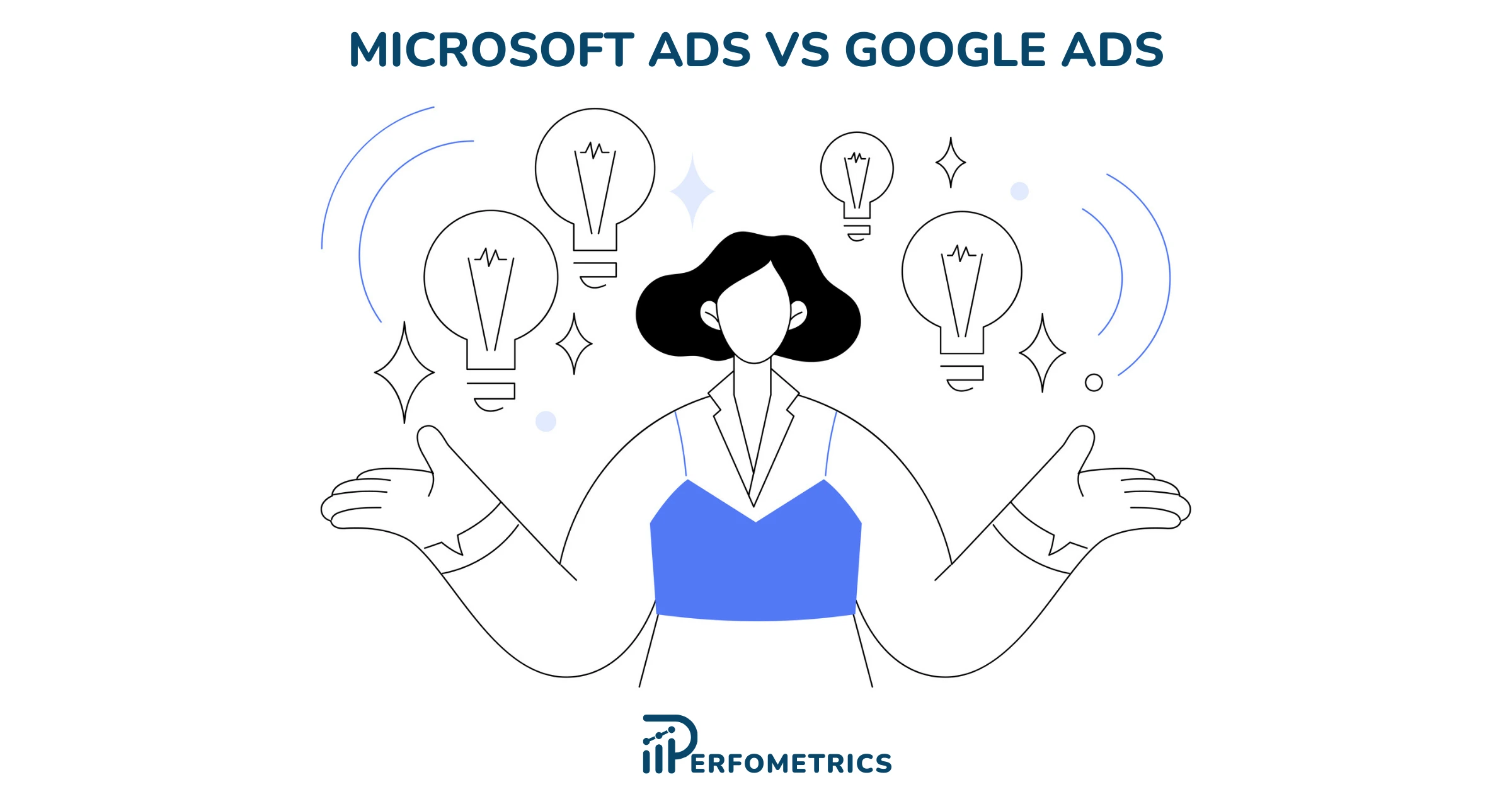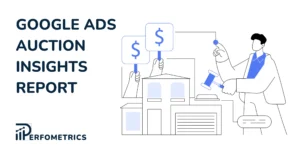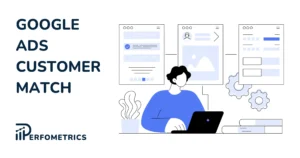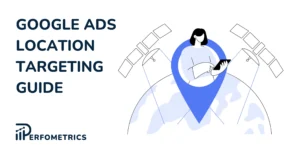Microsoft Ads vs Google Ads: Battle For The Perfect Ad Platform in 2024

Microsoft Ads vs Google Ads, are you struggling to decide between the two for your advertising strategy? In the ever-evolving world of online marketing, choosing the right platform can significantly impact the success of your marketing and business strategy.
As two giants in the digital advertising space, Microsoft Ads and Google Ads offer unique advantages and drawbacks that are worth exploring.
We will compare the differences, the pros and cons of Microsoft Ads and Google Ads, helping you make an informed decision based on your specific advertising needs. By the end of this read, you’ll have a clear understanding of the key differences between the two platforms, enabling you to determine which one aligns best with your advertising goals and if Microsoft Ads is worth it.
Microsoft (Bing) Ads vs Google Ads
When it comes to comparing Bing Ads and Google Ads, it is important to understand the fundamental differences between these two advertising platforms.
Both Microsoft’s Bing Ads and Google’s Google Ads are Pay-Per-Click (PPC) advertising platforms, but they have unique features and characteristics that set them apart.
| Feature | Microsoft (Bing) Ads | Google Ads |
|---|---|---|
| Platform Type | PPC advertising platform | PPC advertising platform |
| Market Reach | Access to 13.9 billion monthly searches; extended via Yahoo!, AOL, and Amazon networks. market share at around 9% | Dominant market reach with the majority of online search queries. Market share with over 80% globally. |
| Demographic Targeting | Sophisticated targeting including age, gender, location, language, and device. | Sophisticated targeting including age, gender, location, language, and device. |
| Device Targeting | Allows targeting by operating system (e.g., Windows, iOS). | General device targeting without OS specificity. |
| Ad Network Reach | Partnerships extend reach beyond Bing’s SERPs. | Limited to Google-owned platforms (e.g., YouTube, Gmail). |
| Cost-Effectiveness | Potentially lower CPC due to lower competition in ad auctions. | Higher CPC due to greater competition in ad auctions. |
| Potential ROI | Higher ROI possible due to less competition. | ROI influenced by larger audience reach but at higher costs. |
| Visibility | Lower market share may affect ad visibility and reach. | High visibility due to Google’s extensive reach. |
Is Google Ads Better Than Bing Ads?
Google Ads is generally considered better than Microsoft Ads for several reasons. It offers a broader reach with billions of daily searches across a diverse audience. Google’s advanced targeting and customization options allow for precise audience targeting, potentially leading to higher conversion rates.
While Microsoft (Bing) Ads has advantages in specific niches, Google’s extensive features and market presence make it a more powerful platform for widespread online advertising. However, the decision isn’t straightforward, as each platform has unique advantages. You should consider their specific offerings and the unique attributes of each service because either Google Ads or Microsoft Ads can be the right one for you based on your needs and goals.
💡 Key Takeaway: While both Bing Ads and Google Ads operate on a PPC basis and offer similar demographic targeting, they differ significantly in reach, cost-effectiveness, and targeting options. Bing Ads might provide lower costs and higher ROI due to less competition, but Google Ads offers broader visibility. You should weigh these factors to determine the best fit for their advertising strategy.
Differences Between Google Ads vs Microsoft Ads Platforms
Microsoft Ads and Google Ads represent two titans of the industry, each with distinct features and benefits.
We’ll explore the key differences between these platforms—from campaign types and targeting to bidding strategies in Microsoft Ads and ad formats—to help you determine which could best achieve your advertising objectives and amplify your digital marketing efforts.
| Tools and Features | Microsoft Ads | Google Ads |
|---|---|---|
| Campaign Types | ✓ | ✓ |
| – Search | ✓ | ✓ |
| – Display | ✓ (Limited) | ✓ |
| – Shopping | ✓ | ✓ |
| – Video/Multimedia Ads | ✓ (Video capability) | ✓ |
| – App | ✓ | ✓ |
| Bidding Strategies | ✓ | ✓ |
| – Automated bidding | ✓ | ✓ |
| – Manual CPC | ✓ | ✓ |
| – Enhanced CPC | ✓ (Limited) | ✓ |
| – target CPA, target ROAS bidding | ✓ (Limited) | ✓ |
| – Maximize conversions | ✓ | ✓ |
| Ad Types | ✓ | ✓ |
| – Text Ads | ✓ | ✓ |
| – Responsive Ads | ✓ | ✓ |
| – Image and Video Ads | ✓ (Limited) | ✓ |
| – Product Shopping Ads | ✓ | ✓ |
| – Showcase Shopping Ads | ✕ | ✓ |
| Networks | ✓ | ✓ |
| – Search Network | ✓ | ✓ |
| – Display Network | ✓ (Limited) | ✓ |
| – YouTube/Syndicated Sites | ✓ | ✓ |
| Targeting | ✓ | ✓ |
| – Keyword | ✓ | ✓ |
| – Placement | ✓ | ✓ |
| – Topic | ✓ | ✓ |
| – Demographics | ✓ | ✓ |
| – Interest/In-market Audiences | ✓ | ✓ |
| Conversions | ✓ | ✓ |
| – Robust conversion tracking | ✓ (Limited) | ✓ |
| – Cross-device conversions | ✓ (Limited) | ✓ |
| Tracking | ✓ | ✓ |
| – Comprehensive tracking options | ✓ | ✓ |
| – Analytics integration | ✓ | ✓ |
| Attribution Models | ✓ | ✓ |
| – Last click | ✓ | ✓ |
| – First click | ✓ | ✓ |
| – Time decay | ✓ | ✓ |
| – Position-based | ✓ | ✓ |
| – Data-driven | ✕ | ✓ |
| Tools | ✓ | ✓ |
| – Keyword Planner | ✓ | ✓ |
| – Reach Planner | ✕ | ✓ |
| – Performance Planner | ✓ (Limited) | ✓ |
✓ = Feature available
✕ = Feature not available
(Limited) = Feature available but with limitations compared to the competing platform
💡 Key Takeaway: Google Ads generally offers a broader range of features and a more extensive network reach. It provides more tools and more advanced attribution models for larger advertisers. Microsoft Ads, while offering many of the same functionalities, has some features that are more limited in scope and lacks some of the more advanced tools available on Google Ads, such as the Reach Planner and certain aspects of conversion tracking.
It becomes apparent that both platforms have their own unique strengths and weaknesses. Although the choice of campaign types in Microsoft Ads is similar to that one in Google Ads, you should carefully evaluate your target audience demographic, marketing goals, and practical knowledge before deciding which platform aligns better with your needs.
Microsoft Ads vs Google Ads – Pros and Cons
When deciding whether to use Bing Ads or Google Ads, it’s important to consider several factors that will contribute to the success of your advertising campaign. Both Microsoft Ads and Google Ads have their own strengths and weaknesses, so understanding your target audience, advertising goals, and budget will help determine which platform is right for you.
| Advantages of Microsoft (Bing) Ads | Disadvantages of Microsoft (Bing) Ads |
|---|---|
| Less Competition: Higher chance of ad visibility and CTR. | Smaller Market Share: Potentially smaller audience reach. |
| Lower Cost-Per-Click: Cost-effective for advertisers. | Lower Traffic Volume: May not drive as many conversions. |
| Granular Targeting: Precise audience targeting options. | Less Control Over Ad Placements: More limited ad network. |
| Auto-Created Ads: Saves time with machine learning ad creation. | Limited Marketing Analytics Tool: Less comprehensive data analysis. |
| Advantages of Google Ads | Disadvantages of Google Ads |
|---|---|
| Wide Market Reach: Extensive global audience for maximum brand exposure. | Higher Cost-Per-Click: More expensive due to higher competition. |
| Granular Targeting Options: Precise targeting capabilities for audience refinement. | Increased Ad Competition: Intense competition for ad placements. |
| Powerful Advertising Platform: Advanced tools and features for campaign optimization. | Complex Interface: This can be daunting for new users due to its complexity. |
| Highly Measurable Results: Detailed analytics for tracking and optimizing performance. | Potential for Ad Fatigue: Risk of users becoming desensitized to ads. |
💡 Key Takeaway: Microsoft Ads provides a cost-effective and less competitive environment with detailed targeting and automated ad creation, suitable for targeting specific demographics but with a trade-off in market reach and analytic depth. In contrast, there are Google Ads benefits such as extensive reach and sophisticated targeting with a robust toolset for campaign optimization but at higher costs and greater competition, which could be complex for newcomers. You need to balance these aspects with your budget and campaign objectives to select the most appropriate platform.
Some additional benefits of Microsoft Ads over Google Ads are:
- Audience Quality: Microsoft Ads often boasts a higher quality audience with reports indicating that users are generally older and have a higher income, which can translate into a higher purchasing power.
- Integration with LinkedIn: Microsoft’s acquisition of LinkedIn allows unique targeting options based on job title, company, and industry within Microsoft Ads, providing a significant advantage for B2B marketers.
- Share of Voice Reporting: Microsoft Ads offers a ‘share of voice’ metric that can help advertisers understand how often their ads are shown in comparison to the total available impressions. This insight can be instrumental in competitive analysis and in making strategic adjustments to improve ad visibility.
- Transparent Search Partner Data: Microsoft Ads provides transparency in search partner performance data, allowing advertisers to see which search partners bring in conversions and at what cost. This feature is not as transparent in Google Ads, making it harder to optimize for the best-performing channels.
Should You Use Microsoft (Bing) Ads or Google Ads?
Choosing between Microsoft Ads (Bing Ads) and Google Ads should be a strategic decision based on a thorough understanding of your business needs, target audience, and advertising goals.
- Business Goals and Objectives: If your goal is to maximize reach and visibility, Google Ads might be the preferred platform due to its larger user base. However, if you’re looking for a higher ROI and lower CPC, Microsoft Ads could be more beneficial, especially for small to medium-sized businesses or those in niche markets.
- Target Audience: Microsoft Ads may provide a better platform if your target audience aligns with the demographics that are more prevalent on Bing—such as an older, more affluent audience that may have less exposure to marketing messages and thus may respond more positively to ads.
- Advertising Budget: Businesses with limited advertising budgets may find Microsoft Ads more cost-effective due to lower competition and CPCs. This can allow for more strategic placements and potentially higher ad rankings with the same investment.
- Industry: Depending on your industry, you might find that one platform outperforms the other. For example, industries that appeal to professionals may benefit from the integration of LinkedIn targeting available through Microsoft Ads.
- Ad Features and Functionality: Evaluate the specific ad features and functionalities that each platform offers. For instance, if granular device targeting or scheduling is crucial for your campaign’s success, Microsoft Ads may provide the edge you need.
In conclusion, the decision between Microsoft Ads and Google Ads isn’t necessarily binary. Many successful digital strategies employ a dual-platform approach to leverage the respective strengths of both Google Ads and Microsoft Ads.
By combining the power of both Microsoft Ads and Google Ads in your marketing strategy while carefully monitoring performance metrics such as click-through rates (CTR), conversion rates (CR), return on ad spend (ROAS), and cost per acquisition (CPA), you can maximize the effectiveness of your campaigns across different audiences.
Generally speaking, Google Ads tend to have higher competition and therefore higher costs per click compared to Bing Ads. This means that if you have a limited budget, Bing Ads might provide you with more value for your money. Additionally, if you find that certain keywords are too competitive on Google but are less so on Bing, leveraging Microsoft Ads could give you a better chance of reaching potential customers without breaking the bank. It’s important to evaluate the features and tools provided by each platform.
Who is Google Ads’ Biggest Competitor?
When it comes to identifying Google Ads’ biggest competitor, there is no doubt that Microsoft (Bing) Ads, stands out as a formidable contender. While Google has managed to dominate the online advertising market with its extensive reach and innovative features, Microsoft (Bing) Ads has steadily gained traction over the years, showcasing its potential to challenge Google’s supremacy. Through partnerships with platforms like Yahoo, AOL, and LinkedIn, Microsoft Ads extends its reach to an even wider audience. These collaborations create opportunities to expand your reach beyond Google’s ecosystem.
💡 Key Takeaway: Remember that each platform has its own strengths and weaknesses but together they provide a comprehensive advertising solution that can help you connect with potential customers effectively. So embrace this diversity in ad platforms as an opportunity rather than seeing it as a challenge or limitation.



